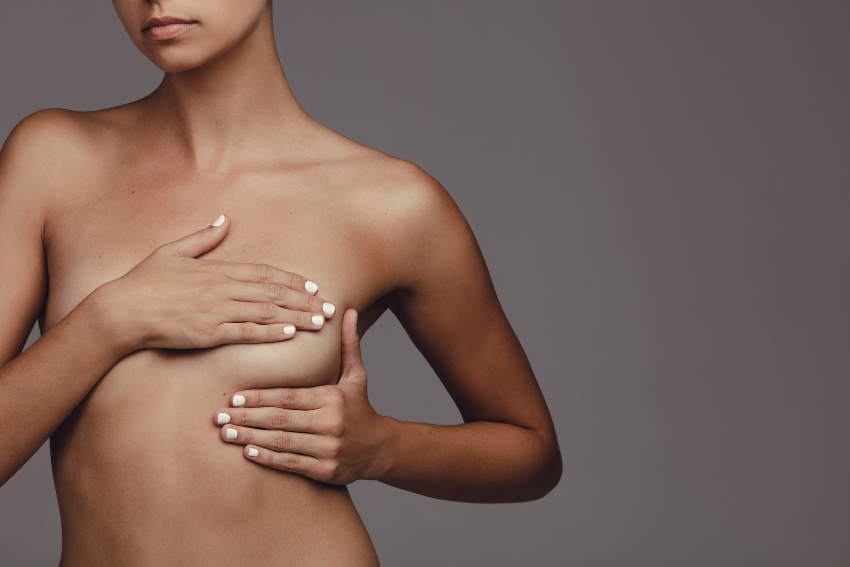Self-Examination of Breasts
For the early identification of breast cancer, the self-examination of breasts is an important tool. As a strategy to screen and diagnose breast cancer, it is an appropriate, inexpensive method that can be employed along with other screening methods. This article explains more about the self-examination of breasts.
INDICATIONS
Self examining breasts is relevant in the following circumstances:
- Breast pain
- Discharge from nipples
- Changes in skin around breasts
- Differences in shape or size of the breast
GUIDELINES FOR SELF-EXAMINATION OF BREASTS
The National Comprehensive Cancer Network recommends that women between the ages of 25 and 40 years should undergo a clinical breast exam every 1−3 years if they are asymptomatic and have no risk factors for breast cancer. More frequent breast examinations are advocated for women above 40 years who are symptomatic and have risk factors or ones with a history of breast cancer.
WHEN TO DO A SELF BREAST EXAMINATION?
Women can do a self-examination of their breasts on a monthly basis by choosing one day of the month. Menstruating women should ideally examine their breasts after their periods. For menopausal women or women with irregular periods, any one day of the month can be considered for examination.
TECHNIQUE
A combination of inspection (visualization) and palpation (using one’s hands or fingers to examine a body part) is used to examine the breasts.
Step 1
With arms on your hips, observe your breasts. Look for size, colour changes, and shape. If you observe dimpling, puckering, or bulging of the skin, change in position of the nipple, or any redness or swelling then inform the doctor.
Step 2
Continue to observe with arms raised, and observe similar things as mentioned in Step 1.
Step 3
Observe your breasts in the mirror for any watery, milky, or blood like discharge from the nipples.
Step 4
In this step, palpation is performed while in a standing up position. The right-hand is used to feel the left breast and vice-versa. The finger pads of the three middle fingers are used for examination. A firm, smooth touch is used to circularly cover the entire breast area from side to side and from top to bottom by covering the armpit and cleavage area. Follow a pattern to ensure that you cover the entire breast. Circular patterns beginning from the nipple to the outer portion of the breast or moving your fingers vertically up and down in rows can be used. It is important to cover the entire breast. Use light pressure for skin and superficial tissue. Medium pressure is to be used for the tissue in the middle of your breasts. Use firm pressure for the deeper tissues, enabling you to feel your ribcage when palpating in the downward direction.
Step 5
In the final step, breasts are palpated while lying down; this spreads the breast tissue such that the entire breast can be easily examined. When lying down, place a pillow under your right shoulder when palpating the right breast. With your arm placed behind your head, use your left hand to palpate the breast using the same technique and pattern as mentioned in Step 4. The pads of your fingers should be used to cover the entire area of the breast and armpit. When one breast is completed, repeat the same procedure on the other breast. It is essential to examine the areola and the area under it. Finally, carefully squeeze the nipples to observe for any discharge.
COMPLICATIONS
Complications may arise secondary to finding false-positive results, which may lead to unnecessary imaging, biopsies, and apprehension triggered by a probable cancer diagnosis.
WHAT TO DO IF YOU FIND A LUMP?
- Avoid panicking. Most lumps may be benign (non-cancerous). Injuries, hormonal changes, or benign breast conditions can cause lumps.
- Contact your doctor in case the lump changes in size from one examination to the next.
- In case of a visit to your doctor, additional screening or imaging tests such as a mammogram, ultrasound, MRI (magnetic resonance imaging), MBI (molecular breast imaging), and a biopsy may be performed.
- Clarify all your doubts. Do not hesitate to get a second opinion.
The self-examination of breasts familiarizes you with your body. It creates awareness about changes that may occur in your breasts. It is an excellent tool for the early detection of breast cancer.
References
- Breastcancer.org. Breast self-exam [Internet] [Updated Oct 24,2019]. Available at: https://www.breastcancer.org/symptoms/testing/types/self_exam. Accessed on May 12, 2021.
- Henderson JA, Duffee D, Ferguson T. Breast Examination Techniques [Internet] [Updated Jul 31, 2020]. Available at: https://www.ncbi.nlm.nih.gov/books/NBK459179/. Accessed on May 12, 2021.
- Cleveland Clinic. Breast Self-exam [Internet] [Updated Jan, 2021]. Available at: https://my.clevelandclinic.org/health/diagnostics/3990-breast-self-exam. Accessed on May 12, 2021.
- Pippin MM, Boyd R. Breast Self-Examination [Internet] [Updated Dec 28, 2020]. Available at: https://www.ncbi.nlm.nih.gov/books/NBK565846/. Accessed on May 12, 2021.

